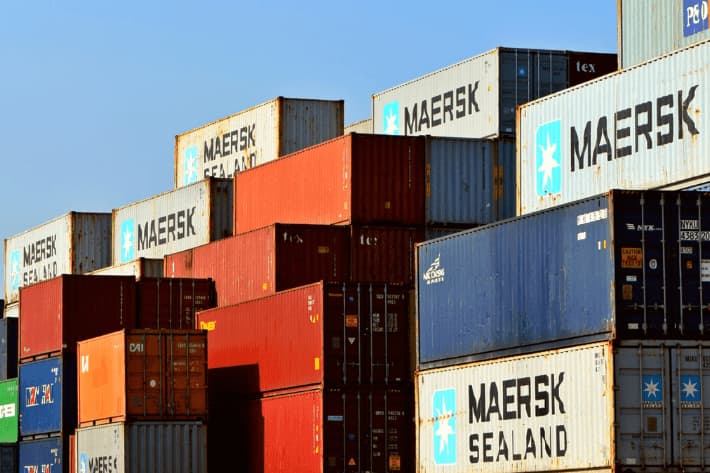
Pierre Ackerman
Nov 25, 2025
How US port fees & trade policy shifts will reshape Logistics and Manufacturing in 2026
As 2025 draws to a close, logistics and FMCG manufacturing organizations across the U.S. are bracing for a new wave of cost pressures and supply chain complexity. With the first round of port surcharges on Chinese-built vessels already in effect and Section 301 investigations gaining momentum, the operating landscape for 2026 is set to be more intricate (and more expensive) than originally anticipated.
For shippers, suppliers, 3PLs, and manufacturers, the focus now shifts from forecasting change to actively managing it.
1. Port fees are now in effect and the real cost impact starts to surface
The October rollout of new U.S. port fees targeting vessels built in China is already sending cost signals through the market. While carriers have only begun passing on charges, early indicators suggest the industry could face billions in cumulative added expenses throughout 2026.
Here’s what’s becoming clear:
- Carriers are incorporating fees into bunker adjustments, GRI schedules, and contract renegotiations.
- Some operators are already adjusting vessel deployment to minimize exposure.
- Shippers on Asia - U.S. lanes may see more variability in rate structures as carriers recalibrate their cost models.
For FMCG and retail-aligned importers - where delivery speed and cost predictability are crucial - the next 12 months will likely bring tighter margins and more frequent pricing updates.
2. Section 301 reviews expand: A flashpoint for industrial supply chains
The federal government’s ongoing Section 301 reassessment has broadened well beyond consumer goods. Industrial machinery, robotics, tooling, automation parts, and related components are now under deeper scrutiny as investigations continue.
Several considerations are emerging:
- New tariffs or rate hikes may hit capex planning cycles for manufacturers investing in robotics or automated production.
- Lead times could fluctuate as suppliers reevaluate sourcing strategies or clear compliance hurdles.
- Companies relying on Asia-sourced industrial equipment may face higher landed costs and heightened regulatory obligations.
With the U.S. doubling down on supply chain resilience and technology security, next year is shaping up to be pivotal for importers of industrial goods.
3. Planning for 2026: What should leaders be doing to prepare their supply chains?
Given the policy landscape and the cost ripple effects already starting, smart planning over the next few weeks is essential. Consider:
- Reassess carrier and NVOCC contracts before peak renewal cycles - Look closely at surcharge mechanisms, tariff pass-through clauses, and space guarantees.
- Revisit routing models - Alternative ports, diversified transshipment hubs, and near-shore suppliers can help mitigate volatility.
- Update budget forecasts for 2026 - Finance and supply chain teams should plan for increased variability in freight, equipment, and compliance costs.
- Tighten trade compliance procedures - With more audits expected, proactive documentation and internal controls will prevent delays and penalties.
- Engage suppliers and carriers early - Collaborative forecasting and transparent cost modelling can prevent the surprises that plagued 2024–2025.
How will East Coast ports, near-shoring, Mexico – U.S. routing, and the Panama Canal shape 2026 supply chains?
As 2026 planning accelerates, many logistics teams and FMCG manufacturers are reassessing their network strategies across North America. The East Coast’s three largest ports; the Port of Savannah, the Port of New York and New Jersey, and the Port of Virginia in Norfolk, are becoming even more critical as importers balance new U.S. port fees, tariff exposure, and ongoing global disruptions.
Shifting toward East Coast gateways
With carriers responding to cost pressures tied to Chinese-built vessels, demand is rising for more stable routing options through Savannah, New York/New Jersey, and Norfolk. These ports are benefiting from:
- Shippers redirecting flows away from West Coast congestion
- Importers seeking more predictable dwell times for FMCG and high-velocity products
- Carriers reshuffling service strings to offset Pacific cost increases
For both freight operators and FMCG manufacturers, this means tighter capacity, more competitive chassis allocation, and higher demand for drayage and warehouse space along the eastern seaboard.
Near-shoring and Mexico – U.S. routing gain momentum
The push to diversify away from Asia has accelerated investments in Mexico-based production, especially for consumer goods, packaging, electronics, and components. For FMCG manufacturers, near-shoring offers shorter lead times and improved cost control.
On the logistics side, this shift is reshaping freight flows:
- Laredo, El Paso, and Otay Mesa are experiencing increased cross-border truck and intermodal activity
- Carriers are expanding cross-border capacity to serve fast-growth manufacturing clusters in northern Mexico
- Companies are reducing reliance on long ocean lead times by blending Mexico–U.S. trucking with East Coast port routings for hybrid supply strategies
Panama Canal constraints continue to drive East Coast decisions
Ongoing water-draft restrictions and capacity limits at the Panama Canal continue to influence carrier schedules and routing choices. While conditions fluctuate, uncertainty is now a planning factor well into 2026.
This affects both freight and manufacturing sectors:
- Carriers may opt to transload or re-route cargo through East Coast ports with fewer operational risks
- FMCG importers moving perishable or time-sensitive goods must plan for potential delays
- Long-term asset and warehousing decisions along the East Coast are increasingly driven by canal-related variability
Together, these pressures: East Coast port demand, near-shoring, cross-border shifts, and global routing constraints are creating a new planning reality for North American supply chains. Logistics providers must prepare for fluctuating capacity and cost structures, while FMCG manufacturers need to evaluate how routing choices will shape inventory strategy, speed to shelf, and landed cost predictability next year.
4. Talent Outlook: Policy-Savvy Supply Chain Professionals in High Demand
The shifting policy environment is reshaping talent priorities across logistics, manufacturing, and transportation. As companies prepare for a more regulated and cost-sensitive marketplace, the demand for specific expertise is rising rapidly.
Increasingly sought-after roles include:
- Procurement Specialists with tariff mitigation expertise - Organizations want professionals who can evaluate supplier risk, negotiate complex contracts, and manage duty exposure.
- Trade Compliance Leaders who can interpret evolving policy - Regulatory fluency, especially across Asia–U.S. trade lanes, is becoming a strategic asset.
- Bilingual trade and customs specialists - Fluency in Asian languages combined with customs know-how remains in short supply.
- Commercial freight professionals who understand policy-driven cost structures - Sales and account managers able to guide customers through tariff changes and surcharge scenarios are outperforming across 3PL and carrier sectors.
- Strategic logistics managers with near-shoring and diversification experience - Companies accelerating North American sourcing strategies need leaders who know how to build resilient, multi-node supply chains.
In 2026, organizations that secure this talent early will be better equipped to navigate cost swings, regulatory pressure, and shifting trade patterns.
What will these trade and cost changes mean for U.S. supply chains?
With new port fees now active and broader Section 301 actions expected to evolve through 2026, logistics and FMCG manufacturers face a year defined by complexity and constant adjustment. The companies that succeed will be the ones that embrace proactive planning, stay adaptable in their freight strategies, and invest in the high-value talent needed to navigate uncertainty.
If your business is preparing for these shifts and looking to strengthen its logistics, supply chain, or trade compliance teams, we’re here to help.


